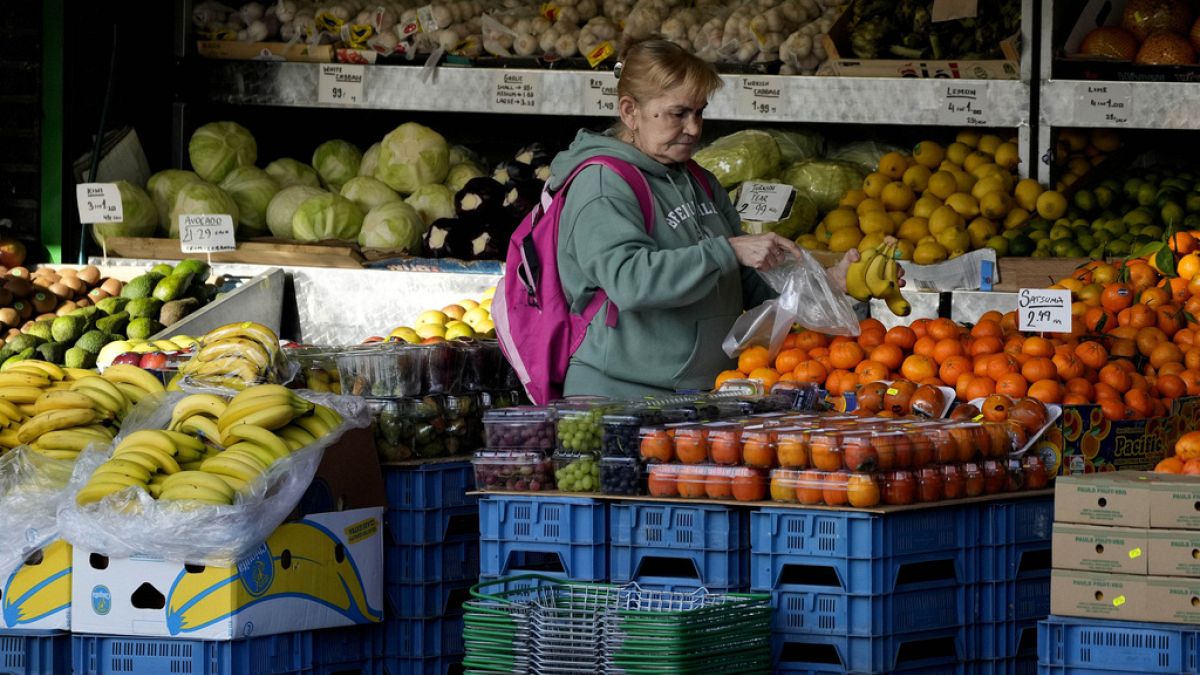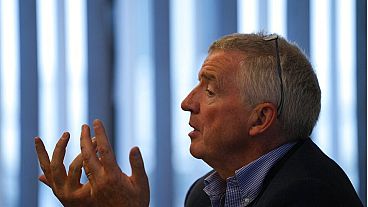UK inflation data due on Wednesday is expected to fall close to the government’s 2% target. Almost three years on from the start of price spikes, how has the economy changed?
After a long, gruelling wait, markets and policy makers are expecting the UK's Office for National Statistics to deliver good news this week.
For the first time since July 2021, experts hope the country's inflation rate will return below - or close to - the state's target of 2%.
Such a result would signal the end of a prolonged price crisis, which peaked with rates at 11.1% in October 2022, a 40-year high.
Now, as costs cool, the UK's Resolution Foundation has examined the legacy of the cost of living crisis. Euronews Business breaks it down.
UK hit hard compared to peers
One key driver of Europe's inflationary spike was the pandemic. As economies emerged from a series of lockdowns in 2021, the demand for goods surged, yet Covid-linked disruptions meant that supply fell behind demand. Due to this imbalance, prices shot upwards, aggravated by lockdown-induced stimulus measures.
A year later, Europe received another blow. Following Vladimir Putin's invasion of Ukraine, several countries were forced to wean themselves off Russian gas, driving up fuel costs due to a scarcity of supply.
While price shocks, therefore, were not unique to the UK, the Resolution Foundation has claimed that the UK was particularly affected.
"The increase in the UK consumer-price level has been by far the largest in the G7, and larger than all but two of the 23 rich countries for which the OECD produces comparable data," reported the Think Tank.
The change in consumer price inflation over the last three years was only higher in Iceland (25%), when comparing the UK with OECD advanced economies.
Sweden, like the UK, has noted a change of 22% since March 2021.
Lower-income households struggled the most
The inflation surge in the UK disproportionately affected the relative cost of essentials, particularly energy and food, said the Resolution Foundation.
As a result, the poorest households were hit the hardest by price spikes, as they tend to spend a larger portion of their budget on these goods.
When it comes to earnings, however, the think tank argued that lower-paid workers were less affected than high earners.
Due to rising prices, many employees found that they were taking a real wage cut even if their nominal salaries were kept constant.
For those on low salaries, pay was more likely to rise in line with prices because of minimum wage requirements, along with tougher hiring conditions among lower-paying jobs.
Brits saved more than US households
The Resolution Foundation also found that, instead of draining savings to support their lifestyle habits, UK households reacted to price surges by reducing spending.
The rate at which individuals were buying goods actually fell more sharply than wages, the group claimed.
“Households have actually saved £54 billion more (and consumed £54 billion less) in 2023 than if saving had returned to its 2019 rate," said the report.
By comparison, this isn't the case in the US, where real consumption per head is around 8% above its pre-pandemic level.
Government debt not saved by inflation
Historically, we've seen that state debt levels can be brought down because of rising prices.
One reason for this is that, if individuals are given a pay rise to match price increases, state tax revenues are likely to increase.
Added to this, inflation can erode the real cost of outstanding government debt.
As prices rise, the nominal value of loans will remain the same, meaning that their real value decreases.
That said, in the case of the latest inflationary spike, the Resolution Foundation has found that the opposite was true.
This is partially because economic growth has been disappointing in the UK over the past three years, and also because of expensive state measures to support households through the cost of living crisis.
On top of this, the UK holds a significant amount of inflation-linked debt, which increases in value along with rising prices.
Although inflation is now cooling, the Resolution Foundation notes that the effects are likely to remain.
Prices in the UK are now approximately 15% higher, according to the group, than they would have been had inflation consistently remained at 2%.
Looking ahead, OBR forecasts imply that GDP will be around 2% lower by the end of next year than was expected before the cost of living crisis.
That's equal to around a £1,900 per household hit to GDP in today's prices.



